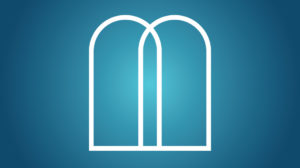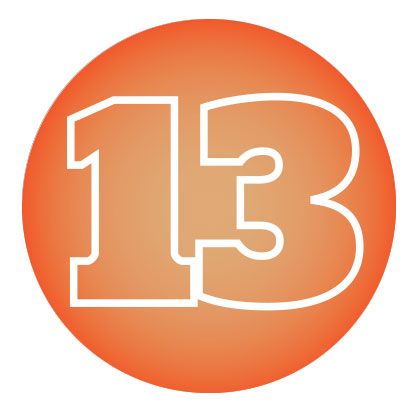Forever a Conduit

The ultimate goal of avodas Hashem is to eliminate bechirah, to reach the point where one no longer struggles with conflicted choices and is consistently faithful to Hashem’s will

“And your eyes shall behold your teachers” (Yeshaya 30). The teachers and sages of Klal Yisroel are our heroes, and as this dictum recommends, their pictures are prominently displayed in many Jewish homes. There are, however, no recorded images of Tanach personalities, and the Torah rarely comments on physical appearance. But the Torah does have something to say about Moshe Rabbeinu’s visage.
First, let’s establish what Moshe did not look like. Centuries ago, a famous artist misread a passage in the Bible and sculpted a statue depicting the Av haneviim, Master of all Prophets, with horns!
Rav Pincus tells of yet another artist and another fallacy. There’s a legend about a painter living during the time of Moshe Rabbeinu who was commissioned by a king to paint Moshe’s portrait. When he returned with the painting the wise men of the royal court claimed they could discern Moshe’s character by viewing the picture, and they concluded that he was a lowly, despicable person. According to the story, when Moshe Rabbeinu heard of their analysis, he confirmed that he’d been born with difficult character traits, but he’d worked on himself for many years to reach perfection.
Although the fabricators of this story may have meant well, aiming to enhance Moshe’s greatness by conceiving humble beginnings, Rav Yehoshua Leib Diskin rejects it as groundless folklore. As Rav Pincus puts it, the very thought that we should — or even could — embellish Moshe’s stature is as absurd as placing a giant on a step stool in order to make him taller!
Furthermore, he adds, Moshe’s greatness was apparent from the first day of his life. And she bore a son and saw that he was good (Shemos 2:2). Chazal say his birth “filled the house with light,” and that his mother, Yocheved, “gave birth to 600,000 children at once.”
Enough of artists and falsehoods. What does the Torah say about Moshe’s countenance? The light at his birth presaged a unique phenomenon that appeared later in his life: And it was when Moshe descended from the mountain…he did not know “ki karan ohr panav b’dabro ito,” that the skin of his face radiated because He [Hashem] had spoken to him…all of Yisroel saw Moshe…and behold the skin of his face shone, and they were afraid to approach him (Shemos 34).
Karan means “shone,” or “radiated.” (Ironically, it was the confusion of this term with another word — keren, horn — that influenced the artist’s rendition of Moshe centuries ago and spawned the myth of the horned Jews.) What was the nature of the karnei hod, the rays of glory that Moshe’s face emitted?
Light is a marker for spirituality. After forty days and nights of learning Torah with Hakadosh Boruch Hu, Moshe’s face reflected his spiritual stature, his proximity to the Shechinah, and the effect that Torah has upon those who study it.
Foundation of Prophecy
The seventh principle of the Rambam’s thirteen articles of faith states: I believe with complete faith that the prophecy of Moshe Rabbeinu was authentic, and that he was the father of all the prophets who preceded him and who followed him.
This principle, as the previous one that established the presence of nevuah, lays the groundwork for the next two principles which cover our belief in Torah. The very first words a young child is taught is “Torah tzivah lanu Moshe.” Moshe received the Torah from Hashem and transmitted it to us. If we are to believe in the divinity and immutability of the Torah, it’s essential that we believe in the authenticity of Moshe Rabbeinu’s prophecy and the integrity of his transmission.
The Rambam emphasizes that our belief in Moshe’s nevuah is incomparable to our belief in any other navi, because it’s sourced in a unique time and place. Although Moshe performed many signs and wonders, more so than any other navi (think: Ten Makkos, splitting of the sea, delivering the mon), these did not serve as absolute evidence of his prophetic powers, because a sceptic can always attribute miracles to sorcery. Instead, it was Matan Torah that established Moshe’s credibility in the eyes of the people. As Hashem assured Moshe, from that day onward, “they will believe in you forever” (Shemos 19:9).
How was such a reality possible? The only way to objectively substantiate the authority of a navi is to witness Hashem granting him that power. At Matan Torah, each of us experienced nevuah when we heard the Voice of Hashem pronounce the aseres hadibros. This demonstrated to us that prophecy is a genuine phenomenon. Then we heard Hashem invite Moshe into the cloud to hear the rest of the Torah. As the Rambam puts it, “he who personally witnesses an event doesn’t have to be convinced that it happened.” This is why our belief in Moshe’s nevuah is unshakable. Thus the promise: they will believe in you forever.
The Meshech Chochmah points out that “forever” is a big word. Is it possible that Hashem superseded the cardinal rule of free will when He assured us that Moshe’s word would always be reliable? Hashem was indeed attesting that Moshe would never choose to fabricate a nevuah, and that His word would always be transmitted one hundred percent accurately by His ever faithful messenger. The ultimate goal of avodas Hashem is to eliminate bechirah, to reach the point where one no longer struggles with conflicted choices and is consistently faithful to Hashem’s will. This describes the integrity of nevuas Moshe Rabbeinu.
“Never” is another big word. At Moshe’s death, the Torah declared that there never arose another navi in Yisroel like Moshe whom Hashem knew face to face (Devarim 34:10). Rabbeinu Nissim tells us that this statement makes it clear that Moshe’s level of nevuah was supernatural, because Hashem wouldn’t disallow an accomplishment that’s attainable by natural effort.
Father of All Prophets
We can now understand why the Rambam gives Moshe Rabbeinu the title of “father of all the prophets.” No subsequent navi can ever contradict Moshe’s words, because as we’ve explained, we have empirical evidence of his trustworthiness. Moreover, we only accept the words of other naviim by instruction of Moshe, who taught us the Torah’s criteria to make this judgment.
However, it seems inaccurate to claim that Moshe was the father of all the prophets, when we consider that some neviim — such as Avraham, Yitzchok, and Yaakov — predated him. We can understand this in the light of the Maharil Diskin’s explanation that when Hashem dictated the Torah to Moshe, he didn’t merely record the nevuos of the Avos. Moshe actually received them anew. Thus, these prophecies were transformed into nevuas Moshe. They then took on the qualities of Torah, gaining depth and scope and multiple layers of meaning. Even the shapes of the letters, their crowns, and their numerical values became significant.
In a similar vein, the Rambam notes that although the mitzvah of bris milah was given to Avraham, we don’t circumcise our children because we received this tradition from our forefather. Rather, we perform milah because it’s one of the 613 mitzvos we received through Moshe. One of the implications of this fact is the definiteness of the mitzvah of milah. Had it been transmitted by Avraham, it could, conceivably, have been retracted at a later date by a different navi, and we wouldn’t know whom to believe. Moshe Rabbeinu’s nevuah, by contrast, can never be annulled by another prophet.
Clear Lens
It’s not only the irrevocability of Moshe’s nevuah that sets him apart from other neviim. The Rambam and others cite numerous contrasts to demonstrate that Moshe’s nevuah was superior and unparalleled. Moshe stood composed, awake, and aware while other prophets collapsed in fear, trembled violently, lost awareness of their physical surroundings, and entered a trance-like state. As Chazal put it, “the Shechinah spoke from the throat of Moshe”; he received a clear, direct message through a single “polished lens” and transmitted it in the same manner. Other neviim received their message in riddles and metaphors, through multiple “unpolished lenses,” and when they regained their sense of reality, they related it in their own words.
Hashem describes Moshe’s prophetic status with these words: “He is trusted in My entire house” (Bamidbar 12:7). Ramchal interprets this to mean that Hashem entrusted him with secrets of creation and keys of understanding that no other human was ever given. It also means that Moshe was a ben bayis, a household member, so to speak, who could enter and exit Hashem’s house at any time — he was in a constant state of readiness to receive nevuah and could even initiate the conversation. By contrast, other neviim needed to concentrate and prepare for the Word of Hashem, and even then they were still not assured of receiving it.
All these examples demonstrate that Moshe’s physicality wasn’t a barrier between himself and the nevuah. In fact, the Rambam writes that Moshe reached the level of a malach, describing him as “seichel nivdal,” pure intellect.
Emblematic of Moshe’s unique status is the Mishnah’s comment that his burial place was created at the close of creation, during bain hashemashos, the twilight zone between Friday and Shabbos. According to the Maharal, the elements that were created during this interval belong to both the natural order of the weekdays and the otherworldly zone of Shabbos. Similarly, Moshe is called Ish Haelokim, the G-dly man, for he was, paradoxically, a mortal man who attained angelic magnitude, an emissary who travelled between the upper and lower worlds.
Crossroads of Worlds
The panim, the face of a person, is another point of intersection of these two worlds, for as the Ramchal notes, it’s the crossroads of the guf and the neshamah. Although it’s physical, it’s called panim because it reveals the p’nim, the inner state, the soul within.
Rav Elchonon Wasserman is reported to have said this about the Chofetz Chaim: “Had Charles Darwin seen the face of my Rebbe but once, he’d never have been able to propose the theory of evolution.” When one observed the Chofetz Chaim’s countenance, he saw a rarefied neshamah, direct evidence that there’s a Creator and a spiritual world.
Indeed the face is the window of the soul. As Rav Chaim Friedlander points out, we can read inner emotions, such as embarrassment, joy, and grief on the face, as well as a person’s level of refinement or coarseness. We can discern illness from the pallor of the face, for the lack of color indicates that the bond between body and soul has weakened.
In a similar vein, death leaves its mark on the face more so than on the rest of the body, for the face abruptly loses its expression and vitality at the departure of the neshamah that animated it. There is, however, an exception to this rule: “And Moshe was one hundred and twenty years when he died; his eye did not dim and his countenance did not change.” Rashi comments, even after death (Devarim 34:7).
The karnei hod had first appeared upon Moshe’s face when he should have been anything but radiant, as he was returning from a forty-day period during which he didn’t eat or drink. Nor could death itself affect the radiance of Moshe, for he had transcended his own corporeality. The Torah’s portrayal of Moshe is the only canvas that conveys the true picture of the navi who spoke to his Creator “face to face” and brought us His Word. And it conveys an image of human perfection.
Sources include the teachings of Rabbi Shimshon Pincus, Rabbi Zechariah Fendel, Rabbi Ezriel Tauber, Rabbi Moshe Shapiro, and Rabbi Yitzchak Sender
(Originally featured in Family First, Issue 485)
Oops! We could not locate your form.







